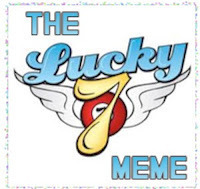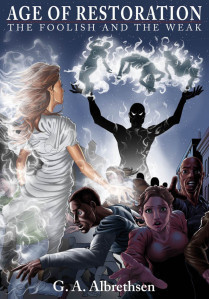G.A. Albrethsen's Blog: Age of Restoration, page 9
May 23, 2012
An Indie rallying cry
Last week (when I almost wrote this post), I stumbled across social commentary disguised as an Amazon review. I will avoid naming the book and author (it’s not my book), as well as the “reviewer.” They both know who they are. I will go so far as to cite what caught my eye, and then my ire.
The reviewer states that when they first bought their Kindle, they were warned by friends NOT to buy anything from self-published authors. The reviewer did it anyway, buying the book in question, because they saw it pop up on other books’ pages in the Customers Also Bought section. After reading some reviews, they were convinced enough to purchase it, download it, and read it.
Reportedly, it didn’t take long for the reviewer to see the error of their ways. Their friends were right. On closer inspection of the rest of the Amazon reviews—the point where their otherwise stellar judgment met its downfall—our intrepid reviewer discovered something: a friend conspiracy.
See, the author in question had so many good reviews for their book, because they had so many friends. Why? The book, in the reviewer’s opinion, was so sorely in need of an editor that anyone with half a brain and a lick of literary sense could see it, from a mile away, over the top of a hill, behind a brick wall, from within a titanium building, hidden in a lead-lined briefcase. (My words, their drift).
Apparently, however, our friend, the reviewer, was unable to determine this themselves prior to purchase by reading the sample chapters, even though they offer this in their own review as a means to determine dreck from the divine.
But I digress….
After perusing the Amazon reviews further, the reviewer determined they could divide the majority of people handing out great reviews for the book into three categories: those who had never written a review before this one; those with the title of author in their customer name; and Indie author groupies, as it were, who give five-star reviews “mostly for self-published authors.”
One is to conclude then, between the author’s true family and friends—who, apparently, are all illiterate, since they’ve never reviewed another book—the ulterior motivated and, thus, dubiously scrupled authors, and the infatuated groupies, our Indie author had it made.
Well, I didn’t look at the 50-odd reviews as intensely as our reviewer friend did, but after a dozen or so, I found similar data. There were some who had never written a review before, others who identified themselves as authors, and still more who seemed to be concentrating on reading self-published works.
However, the conclusion the reviewer drew and the one I arrived at are not the same.
I myself wrote a five-star review, which is sitting on that same book’s Amazon page. I am, in fact, a self-published author, too, though I didn’t mention that with my customer name. I wish I had. I bought the eBook, downloaded it, and read it, but apparently, that’s where the similarities between me and the reviewer end. And, that’s okay. We’re all entitled to our opinions, even when they differ so greatly that it’s as if we read entirely different books. On different planets. In different universes.
For what it’s worth, which is nothing, other than my own sense of honor, I am not a friend of the author in any way, shape, or form. I didn’t read the book with the idea of handing out an awesome review. If anything, I picked it up out of curiosity. I can’t even say I had much of an ulterior motive, since my own book isn’t likely one the other author’s readership would just pick up and read. We’ve had very little contact with each other via any medium other than to exchange the occasional pleasantries.
What can I say? I liked the book. There may very well have been grammatical or spelling errors—not as much as the reviewer contended, or at the very least, I wasn’t as bothered by them as they were. I was engrossed in the story, first wondering what was going on, then what was going to happen next, and lastly, how it was all going to resolve itself.
In my mind, I gave it a fair and honest review. I thought the book was worthy of what I gave it.
If it weren’t, truth to tell, I probably wouldn’t have written the longest review on the page, if not in all of existence, just to trash the book’s contents, while firing both barrels at my fellow reviewers. The reviewer, however, felt compelled to do so.
I’m going to direct the rest of this as if the reviewer were reading it. See if you feel it the way I do.
I can understand frustration, buddy, and you let it drip. But what you did wasn’t to warn your fellow man from the dangers of self-published books. All you did was trash the rest of us who were there, minding our own business, and giving our fairest assessments.
No, what you accomplished was the exact opposite for me. You’ve created an Indie rallying cry. This isn’t about whether the book was good. This is about whether or not self-published authors have a place. If not, you wouldn’t have started it with the warning, and you wouldn’t have gone off on the rest of the reviews. But you just had to tear us down, didn’t you? Why?
I’m sick of hearing how Indie authors don’t measure up. Personally, I’m not in this to catch the eye of a book agent or a major publisher. I’m in it because I want to be in it, and I’m doing everything I can to dot the i’s and cross the t’s.
So, I’m certainly not going to take your tantrum lying down. Criticism stings enough when it’s true and due, but I don’t have to tolerate it, nor does anyone else, when it’s pure opinion or speculation on the part of another who simply decides to dump. You come off petulant at best, complicit at worst.
For all I know, Reviewer, you’re some kind of hired rat yourself. I don’t know what kind, since I have no evidence other than your own insinuations, but my unwarranted conclusion makes about as much sense as yours does.








May 9, 2012
Lucky 7 and a cover reveal
I’D LIKE TO THANK THE COMMITTEE …
Is it possible to feel blessed and cursed, all at the same time?
Okay, perhaps that’s a wee bit of an exaggeration with regards to how I feel in this moment. I do, however, find myself with mixed emotions about being nominated for the Lucky 7 Meme award.
It’s awesome that out of the thousands of authors Kirkus MacGowan knows (many of them follow him on Twitter), I was one of the seven he chose to nominate. Kirkus is a fine fellow with a great novel out, The Fall of Billy Hitchings, and his follow-up, 6th Deadly Sin, sounds like it will be great, too, based on his own Lucky 7 Meme sample.
My reservation comes in the fact that my WIP is just that—a work in progress. And since I enjoy being mysterious and secretive, naturally, I’m reluctant to reveal much of anything of what the next book may bring, even if it is very much to my benefit.
The other tricky thing is that many of the Lucky 7 noms have been providing a book cover to go with their WIP, something else I’m not quite ready to show. It’s not final, you see.
Now, if there were a $10,000 prize attached to this, I could see my excitement level rise. Exponentially. At least. 
Yes, yes, I know. It is a great opportunity for blog and book exposure, and I do very much relish the idea of both.
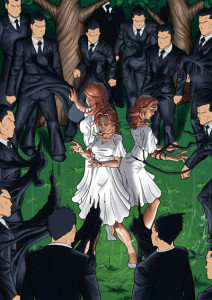
Art only of The Wise and the Mighty book cover. Needs more white flame!
Oh, what the heck. If I’m going to do this, I might as well have a cover reveal, too, right? As with the WIP covers of other authors, mine is subject to change. Hopefully, not too much, though, since I do like it.
So, on to the obligatory particulars:
I go to my WIP, which is called The Wise and the Mighty, and I go to page 77 in said document. I go down seven lines and then provide the next seven lines, sentences, or paragraphs for your reading pleasure. Then, I choose seven other unsuspecting—I mean lucky—souls, and list them. 
THE SETUP
First, the excerpt. As I said, I’m not sure how much I want to reveal, so let’s just say that Brad Cantwell, Colin Haynes, Hamilton Riordan, and Thad Winters are on a … fishing expedition. Yeah, that’s it!
EXCERPT FROM THE WISE AND THE MIGHTY
Several minutes later, the trail turned and headed east. Still, the blip indicated they had farther to go. Finally, as the path crossed an inlet, the blip settled over the signal’s coordinates. They’d need the wet suits after all.
Riordan and Colin stripped down to undergarments and put on the wet suits, while Brad and Winters prepared the masks and the oxygen tanks. Each container held roughly twenty minutes worth.
Moments later, the two divers plunged into the cold waters of the Potomac. In winter, the river had been known to freeze over. Fortunately, it wasn’t that cold. As Brad and Winters stood watch, Colin and Riordan tried to follow the blip in the murky drink.
The water wasn’t very deep, nor the inlet wide. They were less than twenty yards north of the bridge when the blip and the stationary coordinate met. Colin indicated they were right on top of it, and they looked around for what they assumed would be something small, flat, and metallic.
Then, inexplicably, the blips vanished. One moment they were there, the next they were gone. Colin touched a couple buttons on the scanner to reset it, but nothing changed. After a few minutes of unaided searching, he gestured to Riordan, and the two swam back to shore. Once his mask was removed, Colin explained to the other three what had happened.
“So, two pieces of mystery metal and one dead end,” Brad said, as he helped Colin out of his gear and handed him dry clothes.
“I’m interested to know if the Congressman and Thomas found anything,” Colin said.
NOW FOR MY LUCKY 7 MEME VICTIMS … er … NOMINATIONS
Here’s the list:
As far as I’m concerned, none of the above authors are under any obligation by me to fulfill the obligation of their nominations. That’s not to say I wouldn’t love to see what they’ve got going, but I’d also love to have them keep writing their next big thing.
Nothing left to do but say thanks for stopping by, and I look forward to any and all excerpts my Lucky 7 might post, and any comments passersby might be inclined to leave.








May 3, 2012
A four-minute theatrical reading
I spent about four hours yesterday (Wednesday, May 2, 2012) recording and then tweaking an audio excerpt from my debut novel, The Foolish and the Weak, book one in the Age of Restoration series.
I’ve been thinking about doing this for a while, but the catalyst, the reason for doing it now, stems from Twitter conversations held with KJ Waters, aka @kamajowa.
She recorded a couple of things over at audioboo.fm (you can hear a sampling here, if you haven’t already) and was trying to get me to do the same. Nothing like a little peer pressure, even in my 40s. 
My book excerpt comes from the last few pages of Chapter 13. Paz, her brother, Thomas, and their mother, Paloma, are with Brad Cantwell, a young man Paz thought she liked, but at this juncture she isn’t sure she does. They’re in an abandoned home in Florida, it’s nighttime, and Brad has just gone out to investigate a noise they heard coming from the backyard, leaving the other three inside, alone and unarmed.
Those of you who have watched the book’s trailer, Who is… Paz Kirkegaard? will probably notice some similarities between what I’ve chosen to record, and the trailer itself. The trailer is a composite of elements from the book compressed into a single scene, but it does take location cues from this actual spot in The Foolish and the Weak.
For those interested in the behind the scenes, I recorded the excerpt using GarageBand on a MacPro running Lion. The atmosphere is supplied by pre-composed music in GarageBand’s cinematic category titled “No Escape” (I thought it apropos), which I pieced together between its short and long versions. The sound effects are also from GarageBand. I used a Blue Yeti mic with stereo input to record my voice.
I enjoy working with sound and would have loved to live in the day when radio shows thrilled and entertained the masses. That said, it’s only a hobby, and my capabilities and resources are limited. I could list all the defects and errors in this excerpt, but I’ll spare you the time. I do believe it’s good enough to share.
I’ve tested and retested the audio in both Safari and Internet Explorer. It seemed to work on every machine I tried, so hopefully it works for you. Click the link to start, or you can right mouse click to open up your media player.
And now, without further ado, I present to you, a four-minute theatrical reading of: The Foolish and the Weak.
Enjoy!








April 27, 2012
Why and what I tweet
Can I be considered an expert in anything?
Okay, some topics could be debatable, but I know I’m not one when it comes to social media—particularly Twitter. It might be different if all I did was tweet what I ate for breakfast (I’ve done that once so far, with amazing results), what my little one is doing (my two sons are now adults and thus lost their baby cuteness), or just trying to be funny (I do that, with the emphasis on trying).
However, my main reason for using any of this social media is to market my book, through promotion of its page on Amazon, its cinematic book trailer companion, and this blog. In doing so, I’ve tried to be creative and non-repetitive with my promotional tweets, and I’m finding the need to do so (be creative and not repetitious) spills over into other things, like replies to shoutouts, mentions, and in my own acknowledgements when my tweets are retweeted.
I’ve fallen into the latter, mainly, because I’m trying to entertain myself. If I end up entertaining anyone else in the process, cool. If I manage to make someone laugh, or intrigue them with my “sparkling wit” or “dizzying intellect,” or actually manage to help someone, then there’s a feeling of satisfaction as well as the potential benefit of gaining and keeping them as a follower. I’ve noticed that people seem to follow me more, though, when I’m bantering back and forth with other tweeps.
I’ve read, and undoubtedly you have, too, differing opinions about tweet content. Some folks definitely espouse the repetition method, tweeting out identical, or nearly identical, tweets about their product (I see mostly books, but it applies to everything) as if they were classified advertisements. Those are easy to automate and send out, but being on both sides of the spectrum (I own two small weekly newspapers, and I am also a consumer), I can say repetition does not catch my attention after a while.
And it doesn’t take long. I see the avatar of the tweep, the name of the product, the links, the same verbiage, and it’s on to the next tweet for me.
So, as I said, since I get bored with it, I figure others are getting bored with the same old stuff, too, or just plain tuning it out.
Lately, I’ve been trying to limit my product tweeting to one to three tweets per day. Sometimes, I’ll try to get in on an appropriate trending hashtag and go crazy with it, but most of what seems to trend isn’t worth attaching your name to, unfortunately.
Before, when I first started, I was following the crowd and sending something out multiple times per hour. Then it fell to once an hour, and now it’s down to a strategic time, usually around midafternoon. Why? Well, I’ve noticed, purely by accident, that when there are fewer of my book tweets going out, more tweeps will coalesce around them and retweet them. I can’t say the numbers are staggering yet, but still, I’m pretty impressed—and grateful—when I see multiple people retweeting something I said.
So, I think I’ll continue to do that. At this stage, nearly everyone else who is following me has a larger audience, so I do depend on and greatly appreciate all the help they are willing to provide.
Another thing I’ve begun to do is up the amount of my retweeting. It is, after all, the easiest thing to do. I figure the Golden Rule applies. If I’m going to want people to retweet my words, then I should retweet theirs.
However, I don’t do it indiscriminately. I am still branding here, and I feel like I could damage the brand, and perhaps lose followers, if I don’t do them the courtesy of actually taking the time to follow the blog links, or look at the photo or video attached to the retweets. So, I do it. Then, if I actually like the content or find it noteworthy, I retweet it.
I do this with everyone’s tweets, including the book promos, by perusing at least the sample pages of people’s books. If I find them well written, regardless of whether I’m personally intrigued, I’ll retweet the information.
Sure, there are some people’s tweets that I tend to retweet more than others. I do that because I’ve already done my homework on them, and admittedly, because many of them tend to reciprocate the retweets. However, when they tweet or retweet someone or something new, I take the time to look at that, too. And if they get too repetitive, I hold off for a while.
The last thing I’ve been doing more of is engaging in conversation. Sometimes this can feel like crashing the party, but I figure that anything coming across my Twitter stream is fair game. I sometimes wonder if others were surprised I did actually glom onto something they’ve sent out based on their own replies back, but I’m going to continue to do that, too. It’s too much fun to stop.
The one thing I’m not really into is direct messaging. Personally, I haven’t had much of a need for it yet, and with it hidden away, save for a tiny half circle of light, I don’t often see it—certainly not immediately. Some people do it, I guess, to be more discreet, or to personally invite me to their blog or to read their book without it being broadcasted to everyone. I’m not sure why that is, since we all seem to be promoting something, but maybe they’re trying to avoid the follower fatigue I’ve alluded to above.
Are there things I avoid retweeting or engaging in? Definitely. I hate to put absolutes on any of this, and I certainly don’t mean to offend anyone or call anyone out, so please don’t take it that way. I definitely believe in free speech as a pillar principle. That means all kinds of things I wouldn’t go tweeting or seeking out myself can come flying by. Do I wish it didn’t? Sure. Am I going to tell someone to stop it? Probably not. Most likely, I will just unfollow if it gets so bad.
Specifically, I’m talking about curse words and sexual innuendo. Even if the rest of the joke, photo or video I find to be humorous or noteworthy.
Something else I probably won’t tweet or retweet much are religion and politics. That’s not because I don’t have my own views about either, or are necessarily afraid to espouse them. Nor is it that I don’t want to see them on my Twitter feed. I like such tweets when I see them. I just know how sensitive those subjects can be, and I’d rather spend time promoting my book.
If someone asks me about either topic, I won’t shy away from them. I will go as far as the other person wants to go, though. Not a step further.
There are plenty of others, after all, to tweet and retweet all kinds of things. Excusing myself from participating will not slow its flow.
That’s pretty much what I wanted to share, I guess. Now you know why and what I tweet.








April 13, 2012
Character spotlight: the new Camaro?
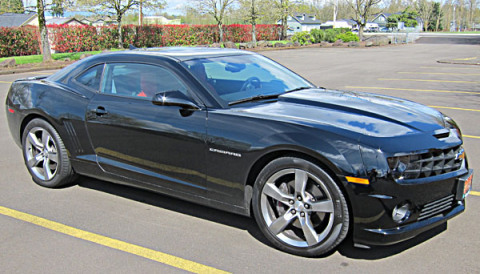
Feel free to stare at her all you like. Sigh...
Brad Cantwell is a character in my novel, The Foolish and the Weak. He drives, and is rather fond of, a late-model, black Chevrolet Camaro.
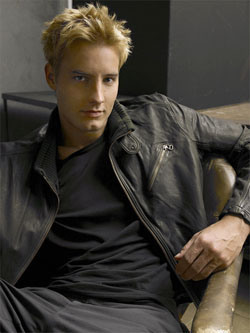
Justin Hartley has an uncanny resemblance to my character, Brad Cantwell
If you’ve read my book, then you already know that Brad is someone who you’re not entirely sure whether you can trust or not. If you haven’t read it, let’s just say he’s not a bad guy, and he seems well-intentioned, but it also seems like he could be looking out for his own best interests at any moment, regardless of how that might affect anyone else.
He is the young man who takes Paz Kirkegaard, our 19-year-old protagonist, to a DC dance club, attempts to grope her, and then receives a well-placed kick for his actions. It is from there that Paz flings herself out into the cold March night, oblivious to other men who are trying to chase her down.
Brad plays a significant role throughout the book and can always be counted on for a quick barb and playing devil’s advocate.
(While I didn’t write him specifically to match any particular actor, I’ve thought of him as looking like Justin Hartley, whom I first became aware of from his recurring role as Oliver Queen, aka Green Arrow, on Smallville.)
In contrast, Brad’s Camaro has only a cameo in TFATW, which is sad, if you ask me. In the second book, The Wise and the Mighty, the Camaro is back, however, and believe it or not, has a fairly critical part in the plot.
I’m not a motorhead. I’ve never worked on an engine in my life (that’s my Dad), and aside from adding gas, oil, antifreeze, water or air, I have done very little maintenance on any of my cars. Thus, I could hardly be considered an expert. However, like most people, I have an opinion, and I know what I like.
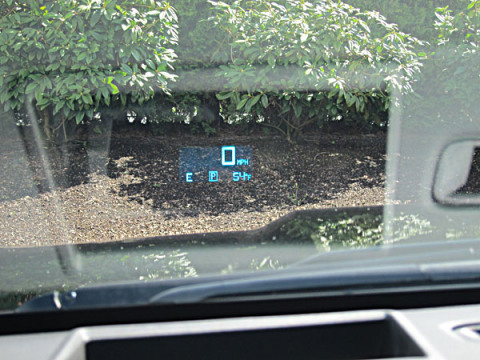
I love this part of the Camaro! Only the driver can see it
For as long as I can remember, I’d wanted a 1960s Stingray Corvette—like the one in the short-lived (and looking back, deservedly so) TV series, Stingray. I saw one episode, which must have been the pilot, and at the end, that car disappeared down a winding road through the trees. It was awesome.
Up until my birthday last year, I still wanted a Corvette. That was before I bought the new Camaro. Now, if I ever get a ’60s Stingray Corvette, cool, but if I don’t, I’m perfectly okay with that.

Entertainment console and four gauges monitoring pressure and power
The strange thing about it is, as much as I’d wanted a Corvette, I never wanted a Camaro. The original Camaro was a cool car. Then, the ’70s happened to it, then the ’80s, and then the ’90s. It took forever for it to recover—until 2010. A lot of us saw it debut, along with Transformers, in the form of Bumblebee’s alter ego, in 2007.
I wasn’t that excited about it then (the Corvette Concept in Transformers 2 caught my eye, though), but when I started to see them on the road in 2010, I knew I wanted one. I was driving a 2004 Mazda RX-8 at the time, and was enjoying it, so there wasn’t a justification (to my wife or to myself) to run out and get the Camaro. Thus, I waited nearly a year to make the change.
Now, I didn’t run out and buy it so I could write about it firsthand. You know the old adage, write what you know? I’d finished the first draft of TFATW in May of 2011. The Camaro came after that. As seldom as the car appears in the first book, it probably wouldn’t have made a difference, either way. It has helped, in some fashion, though, to have it for the second book.

They call this color 'Inferno Orange'. It is orangier than it looks here, but inferno-ish?
I just like the car. It’s been fun to drive. People will say, “I like your car.” Instead of thanking them, which would seem to mean I was somehow responsible for its existence, I reply, “I like it, too.” That’s only backfired on me once, when a woman said, “Well, I hope so. You’re driving it.”
Now, I do have to say, the Camaro is not the only personal family vehicle to appear in TFATW.
My wife has a 2006 Mercury Mountaineer, which to me, is an upgraded version of the Ford Explorer, although the former might be less popular and has been discontinued. We’ve had three Explorers in addition to the Mountaineer, and by far, it’s the best of the lot.
In the book, the Mountaineer is the family vehicle waiting at the Houston airport when Paz, her mother, Paloma, and her brother, Thomas, return home to Bryan, Texas.
My son decided he wanted a 2010 Volkswagen Jetta. We were looking to trade in the 2001 Ford Taurus we had for something similar—another family car. He was going to drive it, though, and the car I thought would work best (I don’t even remember what it was now) just wasn’t to his 22-year-old liking. I’m sure it would have done nothing for his ego or his image, either. Not that the Jetta does, but shhh, don’t tell him that.
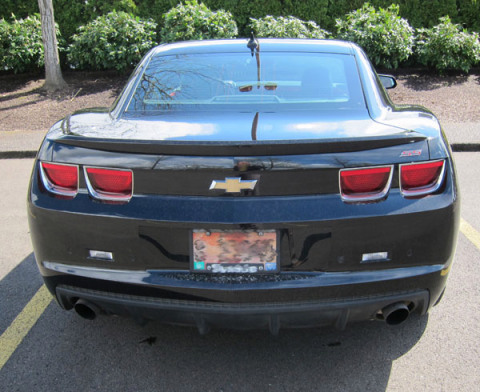
Most drivers must like this view best, since they change lanes and let me pass 
That car, we bought in late 2011, well after TFATW was written. Paz’s best friend, Madison Townsend, drives one in the book.
Now, our family isn’t alone in having life imitating art. One other vehicle in the book is now owned by someone involved with the novel. The book’s editor bought a later model Buick LaCrosse, which Paz, Paloma, and security chief, Colin Haynes, rent and drive.
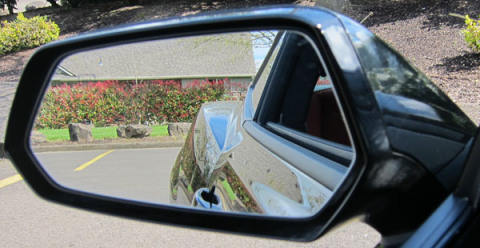
My favorite view from the cockpit—photo doesn't do it justice, but I like the Camaro's flared wheel wells
I think it would be great for any of our cars to be used if a movie were ever made of TFATW. It will need to happen soon, though. My wife wants to trade the Mountaineer in for something more economical. As for the Camaro, we’ll need a stunt double or awesome special effects. It’s a spoiler if I tell you why, so I’ll just leave it at that.








April 6, 2012
Seeing the readers for the trees
Where to begin….
I have a Facebook page for my debut novel, The Foolish and the Weak, which doubles as a page for the series, Age of Restoration.
I have a Twitter account @AgeORestoration (okay, I have more than one, since my more personal account was suspended for “aggressive following.” Grrr….)
I have websites, one for this blog, and another for the book. I even have a professionally made book trailer on YouTube, which is posted to or linked to elsewhere.
I’ve got all these things because I’m supposed to have them. It’s called ‘marketing.’ I tweet something, it reaches X amount of people. I update my Facebook page, X number of others see it. I blog here, and some more people see it. Views at YouTube means more people know about my novel and me.
Somehow, all of this is supposed to lead to people buying my book.
Because of … what?
They like me? They have similar interests? They like what I have to say? It exposes them to my writing abilities? They liked the trailer?
Maybe. But unless I’m in novel-writing mode on this blog or elsewhere, how does anyone know what my fictional writing looks like? There are samples of that on Amazon, at the website for The Foolish and the Weak, and I’ve even resorted to tweeting some excerpts from the book.
I can’t really say any of that has worked, which doesn’t help. I can be patient. I don’t expect overnight anything—success, notoriety, or exposure. It takes time, and while my ‘marketing’ is supposed to help speed things along, I’m okay with it taking more than three months for my book(s) to take off. At the same time, if it were never to happen, or if it takes years, I don’t know if any of this would be worth it, or if I can wait around that long.
In other words, I’m a realist with a sense of urgency.
On top of that fact, ‘marketing’ is totally counterintuitive to me. I’m really not that social. Authors, at least traditionally, never have been. Yes, I’m a throwback—a recluse, if I could get away with it.
My first instincts are to be holed up somewhere, barricaded behind a door, with guard dogs, razor wire, and twenty-foot deep trenches of transplanted swamp water providing me the self-imposed solitary confinement I require to conjure up the magic words for the page.
There’s supposed to be a log cabin in the woods near a lake with my name on it, where I can go on sabbatical to contemplate my inner nature (or navel) and later merge back into society having written that next great novel.
So, you can’t wile away your time on Twitter or Facebook or blogging if you plan to get your next ‘best seller’ written.
Never mind any other expected interactions, say with your family, which you’re supposed to have. Perish the thought you should actually do something with your children or listen to your spouse here and there. Go mend the fence? Yes, dear. Son, I’ll play Monopoly with you right after I finish these next 10,000 words, 200 retweets, and five blog posts.
I’ve hit that wall—that point where debut indie authors wonder, is this truly worth it? What am I doing wrong? What am I doing right? There’s a plethora of blog and marketing advice out there. What’s worked for others? What hasn’t worked for others? There are even multiple posts like this one, about authors being tired and throwing their hands up in despair.
I’ve read them. I’ve been trying their advice. I’ve empathized with the rest. There’s only one thing I haven’t tried: KDP Select.
Don’t get me started.
My solace is, I could be sending out inquiries and stacking up the rejection letters. Not because my book isn’t good. Not because it is bad. Just because I’m not a celebrity, a well-known author, or a friend of an editor in a big publishing house.
I don’t write about TeenageVampireRomanceTriangleAngst, either. No offense. I only mention it because it’s been huge. Now, it’s TeenageDystopianTriangleAngst, which I don’t write about, either. Maybe I should.
I’ll get over it. I don’t wallow in self-pity, not even now, writing this cathartic post. The problem is, I doubt I’m reaching my audience with this—with my ‘marketing’—with any of it.
Do novel readers, actual bona fide readers, see my tweets or read my blog posts? Maybe. I suspect, however, they pale in comparison to the number of authors, or soon-to-be authors, who are reading them. Yes, by nature, authors are readers, too, and I appreciate every view I get, regardless of the source. Truly, I do. But are they my target audience?
My book is targeted to young adults, although, I know that older readers enjoy it, too. I know this because every one I know of who has read it is 19 or older.
But, if you are a writer, and you’re reading this post or reading my tweets, do you really have the time to go over to Amazon or the iBookstore, pay for and download my book, and then sit down to read it? Maybe. Chances are, though, you’re doing what I’ve been doing. Picking up some books from fellow indie authors here and there, trying to get a feel for what’s out there—no doubt enjoying what you’ve read—but you’re not really the target audience of anyone you’ve read, either.
But what you do want, is to get to your own audience, too.
While we need each other to commiserate with and share tips and promotional ideas, what we need beyond that, is readers—ones who don’t have aspirations of becoming an author right away, or ever. Readers who have some time to sit down and devour our books and maybe write a thoughtful review. Or, maybe start a word-of-mouth campaign among their family, friends, coworkers, and peers.
That’s what I want. I don’t mind being deep in the darkest jungle, or lost in the desert, or stranded on the mountaintop, or afloat in the endless sea. I just want to bob my head up high enough to see the shiny city, to see the land through the wisps of trailing fog.
I know my audience is out there. I just need to get to them. They are the readers who don’t think $2.99 is too much for 10 to 15 hours of entertainment, introspection, or motivation. They are dreaming of other things, other than writing, who perhaps can be motivated or inspired by my prose. They are people who will go on to make a difference in the world. They use their own imaginations to create things for the rest of us. They’re not too busy watching television, movies, or being endlessly entertained by a myriad of handheld gaming devices or smartphones.
My audience is made up of people who share similar loves of God, Family, Country, Mystery, Intrigue, Suspense, Fantasy, Sci-Fi, Action, Adventure, Politics, Current Events, Sports, Video Games, and Cars and who would like to see them all synthesized and making an appearance in some fashion in my book. Okay, so they probably don’t mind the Zombies, or the Dystopian gladiator games on steroids, or the Vampire-Werewolf love triangles, either. But they want a break from those for a while, and they don’t mind trying to figure out what’s going on, or thinking about topics they’ve never really thought about before. They enjoy reading a good book and allowing their imaginations to carry them away.
I’m trying to reach them. That’s all I need. That’s all I’m asking for.
I just want to see the readers for the trees.








March 23, 2012
KDP Select: 4 indie novels I’m watching
Like most self-published authors with debut novels, I’ve been following KDP Select, and the debate surrounding it, since before my book was uploaded to Amazon.
In an earlier post on this site, I said I wasn’t inclined to enter the program, citing exclusivity and giving the book away for free as my main reasons for my unwillingness.
Still, the KDP Select program is not something I can just ignore, particularly since so many authors, all of them indies, have been using the program. Truth to tell, I haven’t seen any authors with a large publishing house using the program.
So, I have been watching four other debut novels, all of which I’ve read, by different indie authors, all of whom are currently in the KDP Select program. Some are further along than others, and while their results are not exactly the same, they’ve all seen a greater level of success and are still doing well relative to others who are not in the program.
I will list them in the order they were found in the Amazon Best Seller ranking when I started to write this post. None of the books are free for everyone right now, just Amazon Prime members.
The book doing the best right now of the four is The Ninth District, by Douglas Dorow. As of this writing, the thriller was at No. 192 of all paid books, the big-time list, and sat at No. 2 for Police Procedurals in both categories, and No. 18 for Suspense.
The next book is Blood Orchids, by Toby Neal. This book has been much higher but was still at 1,103 as of this writing, as well as No. 1 and 2 in Drama/United States categories. It was at No. 28 in Police Procedurals.
Book three is Black Beast, by R.S. Guthrie. While no longer a debut novelist (Lost is his follow-up to Black Beast), Guthrie is, nevertheless, still a part of the self-publishing crowd. Black Beast was at No. 16,732, with no other rankings.
The fourth book is The Fall of Billy Hitchings, by Kirkus MacGowan. His book, too, was much higher, and was at 17,211 as of last look. There were no other individual rankings. Sporting a new cover, The Fall of Billy Hitchings has been in the KDP Select program the shortest period of time of the four.
You would have to get their take (and I’m guessing we will see blog posts at some point), but those numbers are nothing to sneeze at, because they do represent sales. In addition, too, many more of their books were downloaded for free, perhaps in the thousands. While it pains me to think of such a thing (free books), it still does put their novels in the hands of readers who could be interested in paying for a subsequent book later on.
At least that’s the theory.
In my case, I made a point to buy each book before or after it was offered for free. I am not an Amazon Prime subscriber (though I have been, and found the $79 annual fee not worth my while come renewal time). And it seemed hypocritical not to purchase the books when I was expecting others to pay for mine.
All of these books are good. I personally think it’s a shame to ever give the digital version away. Discounting is fine, but even 99 cents seems too cheap. Unfortunately, it’s looking like KDP Select is the best way, if not the only way, to get noticed, however. Of course, if the majority of indie authors do it, I’m not sure what the ultimate benefit will be.
Just getting into the KDP Select program has not guaranteed success. I know for a fact that MacGowan has been following a layered approach, by not only offering his book on KDP Select, but by tweeting an incredible amount (and not just about his own book), blogging, guest blogging, and maybe other things I’m not aware of. I’m sure the others have done a bunch of marketing around their books, too. In other words, KDP Select seems to be the least time-consuming part of this process.
I’m still holding out and will continue to watch and see what others manage to do. I wish all four of these authors good luck—they all have talent and promise as authors as far as I’m concerned.








March 8, 2012
The making of “Who is … Paz Kirkegaard?” “The Foolish and the Weak” book trailer, Part II

Dominique Razon as Paz Kirkegaard in "Who Is ... Paz Kirkegaard," the trailer for "The Foolish and the Weak," a debut novel by indie author G. A. Albrethsen
Nearly three weeks ago, I gave details here on the making of the trailer for my debut novel, The Foolish and the Weak, book one in the Age of Restoration series. There are a few more tidbits I’d like to throw out now to wrap things up.
Thanks goes to Steven Silpa of Pixelate Media for supplying this information.
TEN-HOUR SHOOT
As mentioned last post, the shoot commenced at 4 p.m. What I didn’t note then was that it didn’t end until after 2 a.m. the next morning, so roughly ten hours of filming for what amounted to three and a half minutes of video (minus the book information at the end). This doesn’t include, to my knowledge, any of the actual prep work for the shoot done that day, nor the teardown.
ON HER OWN
Actress , who portrays nineteen-year-old Paz Kirkegaard in the trailer, had no one to play off of the entire time. She was given directions as to what would be happening, but like a lot of actors in many movies, she had to rely on her own imagination to properly react when the time called for it.
FEW TRICKS
There are hardly any post-production visual special effects involved. Light was provided principally from outside. While there are a couple lamps on the inside, what you see coming through the bay window is artificial lighting meant to represent moonlight. When it came time to shoot the final sequence’s strobe effect, that, too, was done from outside. Silpa said, “We lit up the streets outside from light coming through the windows and worried about waking the neighbors.”
LOCATION
The location of the shoot was in a seldom-used home. The furniture was covered to “create the feeling that was in a ‘safe house,’ one that is not lived in regularly.”
CAMERA
An all-digital RED ONE camera was used to film the trailer, shot at 4,000 dpi. I’ve watched it on a high-definition television, as well as on my computer monitor, and as might be expected, it looks best when watched at its highest YouTube setting.
WRAP-UP
I’m still waiting to see whether or not the trailer has any influence on book sales. We’re at over 35o views right now, and so far, there’s no evidence it’s led to any copies being downloaded from Amazon or the iBookstore. It’s only been three weeks, and relatively few people have seen the trailer, so I’ll reserve judgment on its effectiveness as a sales tool for the time being.
However, once I can say whether or not it has influenced sales, that will be the main factor in whether or not I would do this all over again. There are certainly faster, cheaper, and simpler ways of putting together a trailer. While I did find the process at times frustrating, and at most times, excruciatingly slow, I know a little more about what to expect if there is a next time.
And if there is, I have no hesitation about using Silpa and his crew again. He was great to work with, and I do recommend him for this kind of production. I don’t feel at liberty to give out the cost (maybe sometime, long into the future), but it was well over $100 to produce. I can also say it was considerably less than $10,000, if giving a range helps.
Once the price was locked in, it remained unchanged, even though postproduction took longer than was originally anticipated. That may have had something to do with the fact that originally, we were talking about something that would run between a minute and a half to two minutes. The trailer, however, is more like a scene from the book in length and in composition, even though the scene itself is more of an amalgamation of elements, rather than an actual scene.
THE PITCH
That’s pretty much it. I encourage you to take a look at the trailer and then hop on over to the Kindle Store on Amazon or the iBookstore to check out The Foolish and the Weak.








March 1, 2012
Flash fiction challenge via @dla1950
The following flash fiction is based on rules devised by David Atkinson on his David’s Musings on Writing blog. You can check out his own crack at it by following the above link. Here are the rules:
1) Write a short story of 200 words or less, excluding the title. It can also be a poem.
2) Begin with these words—Shadows crept across the wall
According to David, for an added challenge, do the following:
3) End the story with these words—everything faded.
4) Include the word orange
5) write in the same genre you normally write
6) Make your story exactly 200 words
What follows is my attempt at all six rules. I even mentioned a lawn mower, which appears in David’s own flash fiction piece.
As a side note, the flash fiction below is inspired by the trailer for my debut novel, The Foolish and the Weak. It’s called Who is … Paz Kirkegaard? The photo is a still from that trailer.
I learned of David’s challenge via a tweet by @kindlbookreview. As mentioned above, David’s twitter handle is @dla1950.
Shadows crept across the wall as Paz entered the lonely room. She set the antique lamp on the table, its orange glow a ward against the gathering gloom, then sat down and sighed.
Sleepy yet determined, she picked up the book, her gaze falling on what looked like a lawn mower motor, when a ding emitted from her laptop.
A chat window opened. It was her mother, Paloma, wondering how she was. Paz reported that she was fine, albeit tired, and still struggling with the changes taking place in her. Paloma told her to get some rest and to embrace who she was becoming.
Before Paz could answer, something else opened—a video chat window. Instead of another person, however, the view was of Paz’s back, as it would be seen from the bay window behind her.
Startled, she stood and waved her hand at the glass, looking over her shoulder to watch the motion on the screen.
Heart pounding, Paz sat back down and typed, “Mom, something’s wrong!”
“Fool! Your mother cannot save you! Darkness always triumphs over light!” came the reply.
No! Not now!
Abruptly, the lamp shattered, flame snuffed out. Soundlessly, Paz screamed, and then everything faded.








February 27, 2012
Elements of these genres or topics inform my writing
My love for writing began when I was in middle school. It was fueled, however, by my love of reading. I thought I’d take a personal walk down memory lane and share with you genres and specific books that I’ve enjoyed over the years. I believe there are elements of these genres and topics in my own book, The Foolish and the Weak, and the Age of Restoration series going forward.
CURRENT EVENTS
This first one is not a book, but I mention it, because it does have some bearing on my style and what I do today. I’m told, since I don’t remember, that I was taught to read by my parents at home, before I even went to kindergarten. The medium? The daily newspaper. Perhaps subconsciously, that’s where I developed a curiosity about current events and the world around me. Maybe it steered me toward a career in journalism. I don’t know. For the last 12 years, I have owned and published at least two weekly newspapers. I do know my fiction writing has been significantly influenced by article and editorial writing. There’s a definite difference, not only in what interests me as far as subject matter goes, but also in style, from the way I use to write.
BIOGRAPHIES
The first books I do remember picking up in my childhood were biographies of famous people, mostly from American history, from the American Revolution through the nineteenth century. It was actually a series of books, with different authors. I wish I could remember now what the series was and just who I read about. I do remember having a voracious appetite for reading about these people and their accomplishments. They were real, and they were heroic. The middle school I attended had them in the school library, and I believe I read them all my fifth grade year.
MYSTERIES
From there, I moved to fiction. Big at that time (at least to me) were the mysteries of Nancy Drew and the Hardy Boys. For some reason, I always found Nancy Drew more interesting. I believe I read nearly all of them, while I may have read one or two Hardy Boys novels. I also picked up a few books from the Alfred Hitchcock and The Three Investigators, too, which became all the rage during that period of time.
FANTASY
Once I’d read a lot of those books, my attention turned to fantasy. Dragonriders of Pern was one of my favorite series by Anne McCaffrey and so were The Sword of Shannara books by Terry Brooks. My all-time favorite fantasy series, however, was the second Chronicles of Thomas Covenant trilogy by Stephen R. Donaldson. To me, Donaldson is the J.R.R. Tolkien of my generation.
SCI-FI
Science Fiction had some influence, too, though more through the Star Wars movies and the Star Trek and Doctor Who television series, now that I look back on it. I know I read something from Ray Bradbury, Isaac Asimov, and Robert A. Heinlein, but I can’t remember what. I just know they were titans of the genre. What I do remember reading was The Hitchhiker’s Guide to the Galaxy, where I discovered science fiction could be hilarious. I also read Slaughterhouse-Five and Catch-22, because they were required reading in high school.
COMIC BOOKS
When I was 14 or 15, I started collecting comic books. That was pretty late to come to the party, but better late than never. I mostly followed Marvel mags, never missing the X-Men, but also liking The Fantastic Four, Iron Man, Spider-Man, Ghost Rider and Captain America. I consider Chris Claremont, the X-Men writer during that period, to be the best comic book writer of all time.
I loved the characters, and their trials as much as I loved the action.
SPY NOVELS
From my late teens to my mid-thirties, I didn’t read a whole lot of anything. I was too busy, I guess, serving a church mission, getting married, having children, and trying to support a family. Somewhere in there, I worked in a bunch of the James Bond novels, as well as some of the Jason Bourne books.
DAN BROWN
When I got back to it, my tastes continued to evolve. I started reading things like The Da Vinci Code, Angels & Demons and The Lost Symbol, by Dan Brown. In fact, I’ve read all of his novels.
J. K. ROWLING
Of course, I got swept up with my youngest son and virtually everyone else in the Harry Potter books.
HISTORICAL/POLITICAL
Books I read leading up to the writing of The Foolish and the Weak (I stopped reading books while writing so I wouldn’t be unduly influenced by anything) included: Seven Miracles That Saved America, by Chris and Ted Stewart. The book is one part historical fact, and one part historical fiction. I’ve read Chris Stewart’s The God of War, a military techno thriller, Frederick Forsyth’s The Cobra and Ayn Rand’s Atlas Shrugged.
AN ACKNOWLEDGEMENT
I probably should mention three other books I read, not because they have bearing on my reading preferences or writing style, but because they led me directly to writing and self-publishing at this time. Those books would be Amanda Hocking‘s Trylle Trilogy.
FULL CIRCLE
My love for current events continues, as well, and shows through in The Foolish and the Weak. The internet is a wonderful source for all kind of news articles, commentary and blogs. I’m interested in faith, politics, technology, some pop culture, food, sports and cars. In one way or another, all of those topics are woven into The Foolish and the Weak.









